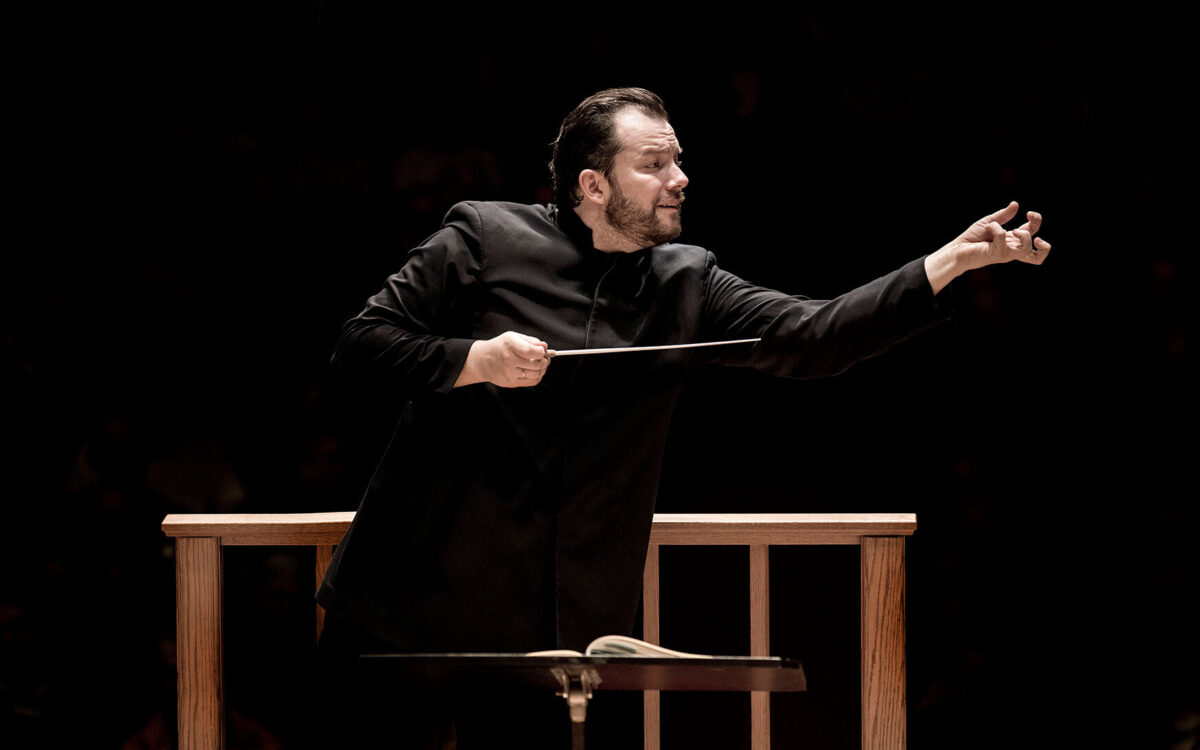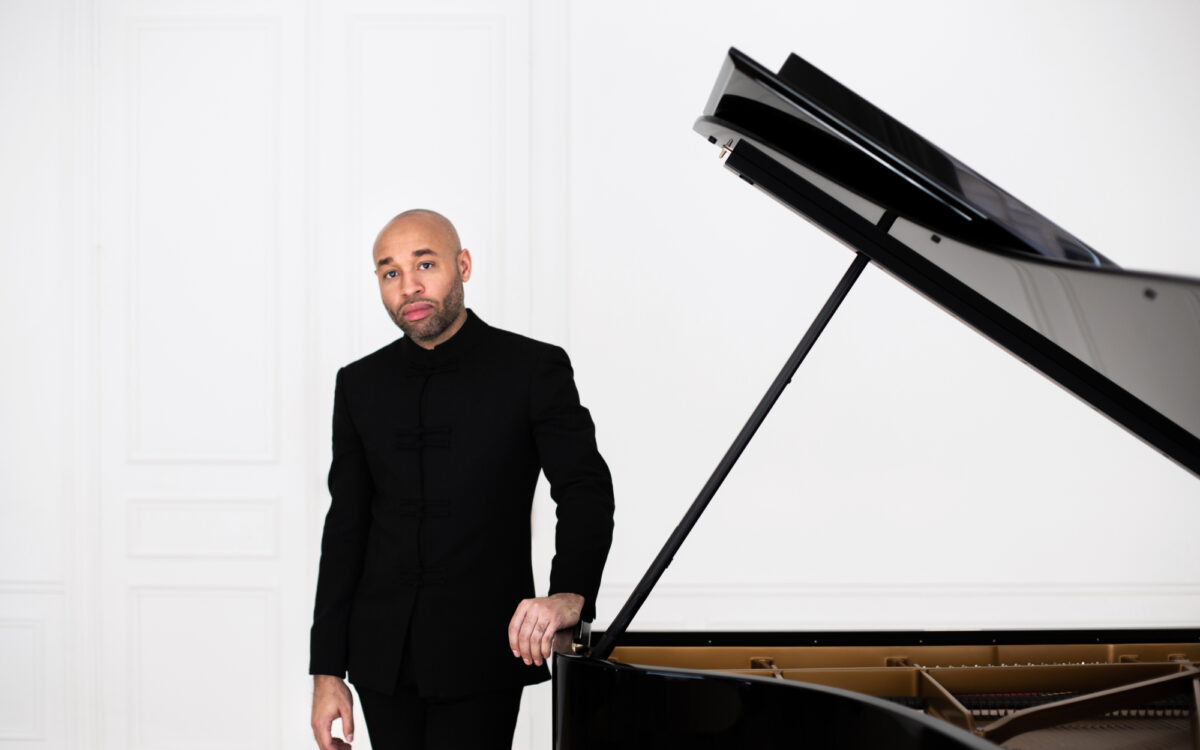Piano Concerto No. 23 in A, K.488
Joannes Chrisostomus Wolfgang Gottlieb Mozart—who began calling himself Wolfgango Amadeo about 1770 and Wolfgang Amadè in 1777 (he used “Amadeus” only in jest)— was born in Salzburg, Austria, on January 27, 1756, and died in Vienna on December 5, 1791. He completed the A major concerto, K.488, on March 2, 1786, and presumably played it in Vienna soon after.
In addition to the solo piano, the score calls for an orchestra of 1 flute, 2 clarinets, 2 bassoons, 2 horns, and strings (first and second violins, violas, cellos, and double basses). (The composer suggested in a letter that in the absence of clarinets, their lines might be cued into the violin and viola parts.) The concerto is about 24 minutes long.
Figaro was the big project for the spring of 1786, and it was ready for performance on May 1, but Mozart repeatedly interrupted himself, dashing off his one-acter The Impresario for a party at the Imperial palace at Schönbrunn, and writing three piano concertos, presumably for his own use that year. The A major is the middle one of the three, being preceded by the spacious E-flat, K.482, completed at the end of December, and being followed just three weeks later by the somber C minor, K.491. Its neighbors are bigger. Both have trumpets and drums, and the C minor is one of the relatively rare works to allow itself both oboes and clarinets. The A major adds just one flute plus pairs of clarinets, bassoons, and horns to the strings, and with the last in the whole series, K.595 in B-flat (January 1791), it is the most chamber-musical of Mozart’s mature piano concertos. It is gently spoken and, at least until the finale, shows little ambition in the direction of pianistic brilliance. Lyric and softly moonlit— as the garden scene of Figaro might be, were there no sexual menace in it—it shares something in atmosphere with later works in the same key, the great violin sonata, K.526, the Clarinet Quintet, and the Clarinet Concerto.
The first movement is music of lovely and touching gallantry. Its second chord, darkened by the unexpected G-natural in the second violins, already suggests the melancholy that will cast fleeting shadows throughout the concerto and dominate its slow movement altogether. The two main themes are related more than they are contrasted, and part of what is at once fascinating and delightful is the difference in the way Mozart scores them. He begins both with strings alone. The first he continues with an answering phrase just for winds, punctuated twice by forceful string chords, and that leads to the first passage for the full orchestra. But now that the sound of the winds has been introduced and established, Mozart can proceed more subtly. In the new theme, a bassoon joins the violins nine measures into the melody, and, as though encouraged by that, the flute appears in mid-phrase, softly to add its sound to the texture, with horns and clarinets arriving just in time to reinforce the cadence. When the same melody reappears about a minute- and-a-half later, the piano, having started it off, is happy to retire and leave it to the violins and bassoon and flute who had invented it in the first place, but it cannot after all refrain from doubling the descending scales with quiet broken octaves, adding another unobtrusively achieved, perfectly gauged touch of fresh color.
Slow movements in minor keys are surprisingly uncommon in Mozart, and this one is in fact the last he writes. An “adagio” marking is rare, too, and this movement is an altogether astonishing transformation of the siciliano style. The orchestra’s first phrase harks back to “Wer ein Liebchen hat gefunden” (“He who has found a sweetheart”), Osmin’s animadversions in The Abduction from the Seraglio on the proper treatment of women, but nothing in the inner life of that grouchy, fig-picking harem-steward could ever have motivated the exquisite dissonances brought about here by the bassoon’s imitation of clarinet and violins. Throughout, Mozart the pianist imagines himself as the ideal opera singer— only the Andante in the famous C major concerto, K.467, is as vocal—and a singer, furthermore, proud of her flawlessly achieved changes of register and of her exquisitely cultivated taste in expressive embellishment.
After the restraint of the first movement and the melancholia of the second, Mozart gives us a finale of captivating high spirits. It keeps the pianist very busy in music that comes close to perpetual motion and in which there is plenty to engage our ear, now so alert to the delicacy and overflowing invention with which Mozart uses those few and quiet instruments.
Michael Steinberg
Michael Steinberg was program annotator of the Boston Symphony Orchestra from 1976 to 1979, and after that of the San Francisco Symphony and New York Philharmonic. Oxford University Press has published three compilations of his program notes, devoted to symphonies, concertos, and the great works for chorus and orchestra.
The first United States performance of Mozart’s Piano Concerto No. 23 in A, K.488, took place in Boston’s Music Hall on December 19, 1878, at a concert of the Harvard Musical Association led by Carl Zerrahn, with H.G. Tucker as piano soloist.
The first Boston Symphony Orchestra performances of Mozart’s A major piano concerto, K.488, took place under Serge Koussevitzky’s direction on February 8 and 9, 1929, with Nikolai Orloff as soloist.


